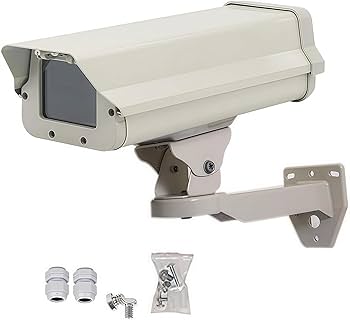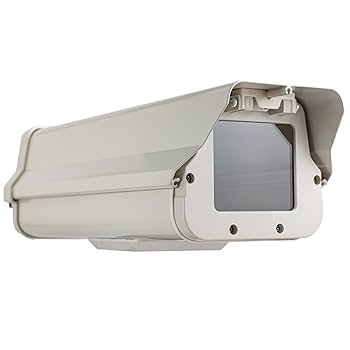Using a camera outdoors can be fun. You can take pictures of nature, animals, or your family. But the weather and environment can harm your camera. Rain, dust, heat, and cold can damage it. This is why many people use outdoor camera housing.
Outdoor camera housing is a case that protects your camera. It keeps the camera safe from water, dust, and physical damage. This helps your camera last longer and work better. In this article, we will talk about outdoor camera housing. We will explain what it is, why you need it, types of housing, and how to choose one. Let’s start!
What Is Outdoor Camera Housing?
Outdoor camera housing is a cover made for cameras. It is usually made from strong materials like plastic or metal. The housing is designed to keep the camera safe from bad weather and other dangers.
The housing has a clear window. This window lets the camera see and take pictures. At the same time, the window keeps water and dust out.
Some housings also protect the camera from heat or cold. Others can stop animals from touching the camera. This is very useful if you want to take pictures in the wild.
Why Do You Need Outdoor Camera Housing?
There are many good reasons to use outdoor camera housing. Here are some important ones:
- Protects from Rain and Water: Rain can damage your camera. Outdoor housing keeps water away.
- Keeps Dust and Dirt Out: Dust can enter the camera and harm it. Housing stops dust from getting in.
- Prevents Physical Damage: If you drop your camera, the housing can protect it from breaking.
- Guards Against Extreme Temperatures: Some housings keep the camera safe from cold or heat.
- Stops Animals and Bugs: Animals might touch or damage your camera. The housing keeps them away.
- Works in Different Outdoor Conditions: You can use your camera in rain, snow, or dust storms.
Without outdoor camera housing, your camera can stop working. It might get dirty, wet, or broken. This will cost you money to fix or buy a new one. So, using housing saves money in the long run.
Types of Outdoor Camera Housing
There are different types of camera housing. Each type is made for specific needs and cameras. Let’s look at some common types:
| Type | Description | Best For |
|---|---|---|
| Waterproof Housing | Protects camera from water. Can be used underwater. | People who want to take pictures in rain or underwater. |
| Weatherproof Housing | Protects from rain, snow, and dust. | Outdoor photographers in rough weather. |
| Hard Case Housing | Strong and tough case to protect from drops and hits. | People working in construction or rough places. |
| Protective Dome Housing | Clear dome shape that protects but lets the camera see all directions. | Security cameras for outdoor use. |
| Heated Housing | Has a small heater to stop freezing in cold places. | Photographers in very cold areas. |
Materials Used in Outdoor Camera Housing
Materials matter. They decide how strong and useful the housing is. Here are common materials:
- Plastic: Light and cheap. Good for rain and dust protection.
- Aluminum: Strong and light. Good for rough use.
- Polycarbonate: Very strong plastic. Used for clear windows and bodies.
- Stainless Steel: Very strong and heavy. Used in harsh environments.
When choosing housing, check the material. Make sure it fits your needs and budget.
How to Choose the Right Outdoor Camera Housing?
Choosing the right housing is important. Here are some steps to help you:
1. Know Your Camera Size And Type
Make sure the housing fits your camera. Some housings are for small cameras. Others fit big cameras.
2. Check The Weather Conditions
Think about where you will use your camera. Rainy, dusty, or snowy places need strong housing.
3. Decide On The Protection Level
Do you need only water protection? Or do you want protection from drops too? Choose housing with needed features.
4. Look At Material And Weight
Heavy housing can be hard to carry. Light housing is easy but may not be very strong.
5. See If The Housing Has Extra Features
Some housings have heaters, lens covers, or mounts. These can help depending on your use.
6. Check The Price
Good housing can be expensive. But it protects your camera. Don’t buy the cheapest one if it is not strong enough.

Credit: www.amazon.com
Benefits of Using Outdoor Camera Housing
Using outdoor camera housing has many benefits:
- Longer Camera Life: Protects from damage and wear.
- Better Picture Quality: Keeps lens clean and safe.
- More Shooting Opportunities: Use your camera in bad weather.
- Less Repair Cost: Prevents damage and fixes.
- Peace of Mind: No worry about weather or accidents.

Credit: www.amazon.com
Tips to Use Outdoor Camera Housing
Here are some tips to get the best from your housing:
- Clean the housing window often to keep pictures clear.
- Check seals and locks to keep water and dust out.
- Use lens cloth to clean inside the window if possible.
- Test the housing before using it in water or bad weather.
- Store the housing in a dry place when not in use.
- Handle the housing carefully to avoid cracks or breaks.
Frequently Asked Questions
What Is Outdoor Camera Housing Used For?
Outdoor camera housing protects cameras from weather and damage.
How Does Weatherproof Housing Protect Security Cameras?
It keeps rain, dust, and dirt away from the camera lens.
Can Outdoor Camera Housings Prevent Theft Or Tampering?
Yes, sturdy housings make it harder to steal or damage cameras.
What Materials Are Outdoor Camera Housings Made From?
Common materials include metal, plastic, and polycarbonate for durability.
Conclusion
Outdoor camera housing is very useful. It protects your camera from rain, dust, and damage. It lets you use your camera anywhere. When choosing housing, think about your camera size, weather, and protection needs. Good housing helps your camera last longer and work better.
Remember, a small investment in housing can save your camera. It also gives you freedom to take great pictures outside. So, if you like outdoor photography, consider getting outdoor camera housing today.